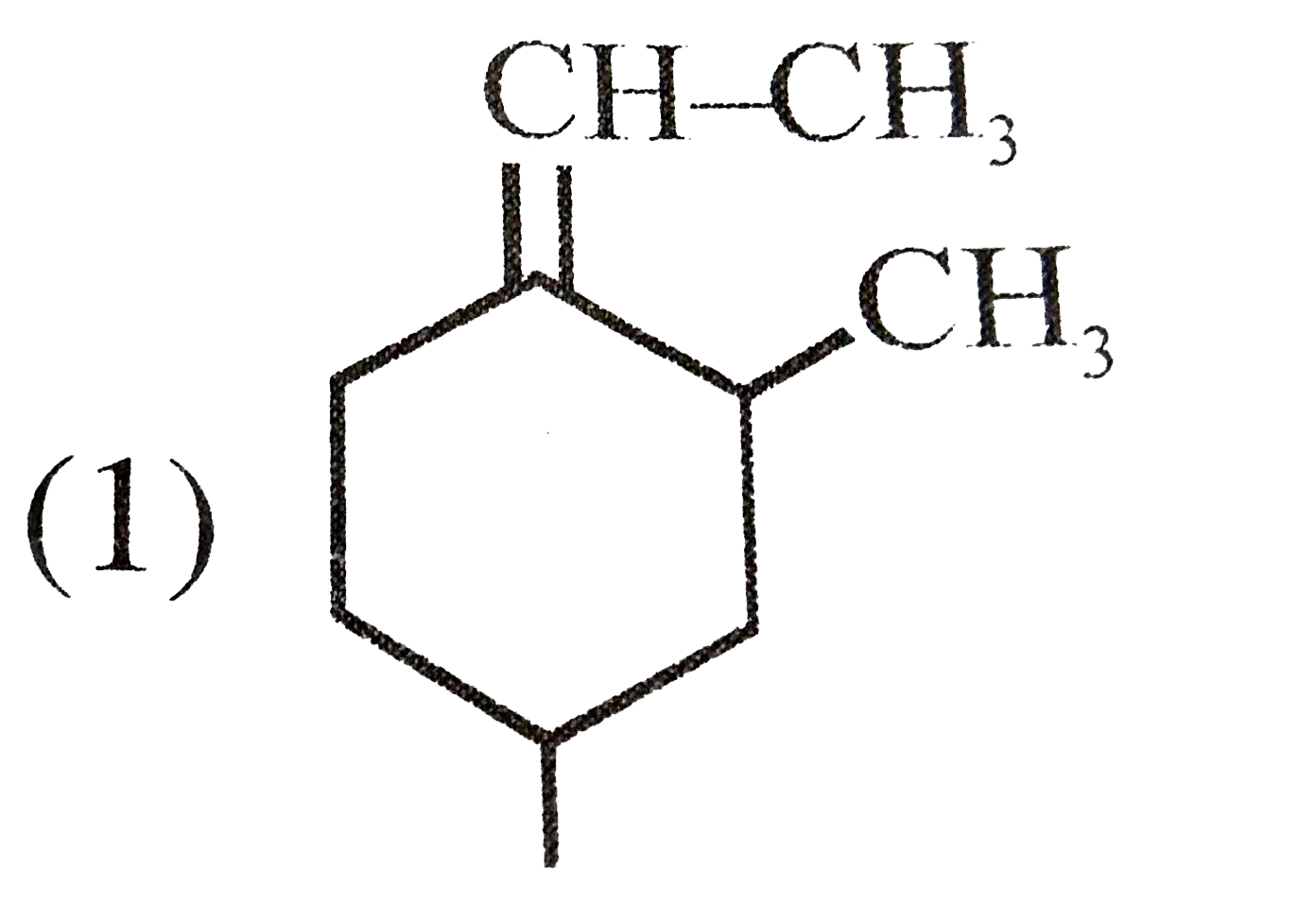Which of the following is optically active



All of these
The correct Answer is:D
To determine which of the given compounds is optically active, we need to identify if they possess chiral centers. A chiral center is typically a carbon atom that is attached to four different substituents. Here’s a step-by-step analysis:
Step 1: Understand the Concept of Chirality
- Chirality refers to the property of a molecule that makes it non-superimposable on its mirror image. A compound is considered optically active if it has at least one chiral center.
Hint: Look for carbon atoms that are bonded to four different groups.
Step 2: Analyze Compound 1
- Draw the structure of Compound 1. Identify the carbon atoms and their substituents.
- Check for a carbon atom that has four different substituents. In this case, one carbon has:
- CH3 (methyl group)
- A double bond (which can be considered as a different group)
- Another CH3
- A hydrogen atom
- Since this carbon has four different groups, it is a chiral center.
Hint: Count the different groups attached to each carbon.
Step 3: Analyze Compound 2
- Draw the structure of Compound 2 and identify the carbon atoms.
- Look for a carbon atom that has four different substituents. Here, you can find:
- One hydrogen
- A CH2 group
- Another CH2 group
- A different substituent
- This carbon also has four different groups, making it a chiral center.
Hint: Check for symmetry; if a carbon has two identical groups, it cannot be chiral.
Step 4: Analyze Compound 3
- Draw the structure of Compound 3 and identify the carbon atoms.
- Look for carbon atoms with four different substituents. In this compound:
- One carbon has CH3, C2H5, and two hydrogens.
- This carbon also qualifies as a chiral center.
Hint: Remember that having two identical substituents means the carbon is not chiral.
Step 5: Conclusion
- Since all three compounds have at least one chiral center, they are all optically active.
- Therefore, the answer is that all of the compounds listed are optically active.
Final Answer: All of the above compounds are optically active.
- Chirality refers to the property of a molecule that makes it non-superimposable on its mirror image. A compound is considered optically active if it has at least one chiral center.
- Draw the structure of Compound 1. Identify the carbon atoms and their substituents.
- Check for a carbon atom that has four different substituents. In this case, one carbon has:
- CH3 (methyl group)
- A double bond (which can be considered as a different group)
- Another CH3
- A hydrogen atom
- Since this carbon has four different groups, it is a chiral center.
- Draw the structure of Compound 2 and identify the carbon atoms.
- Look for a carbon atom that has four different substituents. Here, you can find:
- One hydrogen
- A CH2 group
- Another CH2 group
- A different substituent
- This carbon also has four different groups, making it a chiral center.
- Draw the structure of Compound 3 and identify the carbon atoms.
- Look for carbon atoms with four different substituents. In this compound:
- One carbon has CH3, C2H5, and two hydrogens.
- This carbon also qualifies as a chiral center.
- Since all three compounds have at least one chiral center, they are all optically active.
- Therefore, the answer is that all of the compounds listed are optically active.
Topper's Solved these Questions
Similar Questions
Knowledge Check
Which of the following are optically active?
A B
B CCH3−CH∣D−COOHD
CCH3−CH∣D−COOHD
Which of the following are optically active?
A B
B C
C D
D
Which of the following is optically inactive ?
View SolutionWhich of the following is not optically active?
View SolutionWhich of the following is not optically active?
View SolutionWhich of the following is/are optically active?
View SolutionWhich of the following shows optical activity?
View SolutionWhich of the following is an optically inactive compound?
View Solution